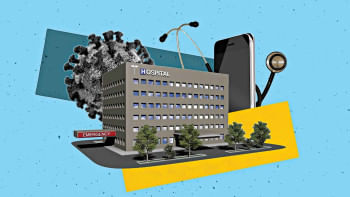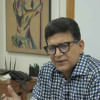Bangladesh must invest in health justice

A 2016 research study published in the Oxford University Journal analysed health inequality in Bangladesh, which found that income variance is the prime factor behind health disparities. Private health providers contributed to 95 percent of the health gap, while public providers contributed the least. The study also concluded that healthcare benefit utilisation is pro-rich, and "the poorest people with largest need for health actually received lower benefits."
It is clear that a correlation exists between family/personal income and the level of healthcare one receives. According to the Borgen Project, in Bangladesh, there are 35 infant deaths per 1,000 births for the lowest income quintile, as opposed to 14 infant deaths per 1,000 births for the highest income quintile.
The World Bank uses the Gini Index to measure income disparity, which can also be applied to healthcare to decide health inequity, as done by the WHO in member states. The Gini Index data available for Bangladesh from 1982 through 2016 shows that income inequality has only burgeoned every year, and that we are stuck with ever-increasing health disparities.
To effectively confront health disparity, we must embrace health equity or health justice – equitable care for all based on everyone's unique socioeconomic needs. This means expanding healthcare access for the under-served, and acknowledging the right to healthcare and human dignity of those severely afflicted by income inequality.
Health equity is currently a major driving force in US healthcare. Gini Index data from 1976-2020 shows that income disparity has steadily grown in the country, exacerbating health disparities. As a result, the US has undertaken major health equity initiatives for the poor, and encouraged all healthcare actors to do the same.

The federal and state governments have designed joint programmes, especially Medicaid and the Children's Health Insurance Program (CHIP), providing comprehensive social and healthcare services to 91 million low-income individuals as of August 2022. This constitutes one-fourth of the total US population.
In the US, healthcare for low- and middle-income families has consistently remained a major political agenda in all national elections since the 1980s. In December 2021 and January 2022, HIMSS Market Insights conducted a survey on 110 US healthcare executives, in which 89 percent of respondents said that health equity is a part of their core business strategy.
Luckily, Bangladesh has already implemented the core strategy of improving health and healthcare by investing in the poor. A glowing article by Nicholas Kristof published in The New York Times in March 2021, titled "What Can Biden's Plan Do for Poverty? Look to Bangladesh," cited many examples of how Bangladesh has successfully eradicated poverty for 25 million people in the last 15 years, and improved life expectancy by investing in the poor, especially low-income women, girls, and children.
President Joe Biden's American Rescue Plan, which, among others, allocated funds generously to address child poverty in the US, drew criticisms from detractors. A strong advocate of the plan, Kristof asserted that it would cut child poverty by half, advising critics to look at Bangladesh's examples.
However, there is still a great need in Bangladesh to improve access to healthcare for marginalised populations by adopting health equity. A 2017 article published in the International Journal for Equity in Health concluded that about 63 percent of the healthcare costs in Bangladesh are out-of-pocket costs, which are increasing by the year, and the rest is paid by the government. This places an unequal burden on low-income individuals.
Bangladesh must continue to invest in taking care of its most needy. The government should increase its cost share for health coverage for rural and underserved populations. It must scale up identifying disadvantaged populations across the socioeconomic spectrum and create social safety networks for them.
The government must also work in tandem with private and non-profit healthcare providers, such as community-based organisations (CBOs), to build the capacity of our healthcare system in order to provide for the complex medical and social needs of those who live at the bottom of the social ladder. CBOs have in-depth experience in rural and community health, and can support evidence-based practices.
Collective action is always more powerful than the government's actions alone. Hence, the political leadership must ensure that healthcare measures are comprehensively informed by public and private input.
Health equity can be a paradigm on which Bangladesh can address the healthcare gap. It must step up its investment in the poor. The government must have NGOs, CBOs, and private healthcare providers on its side when driving health equity initiatives.
ABM Uddin is a healthcare consultant for the Florida Agency for Health Care Administration.

 For all latest news, follow The Daily Star's Google News channel.
For all latest news, follow The Daily Star's Google News channel. 









Comments